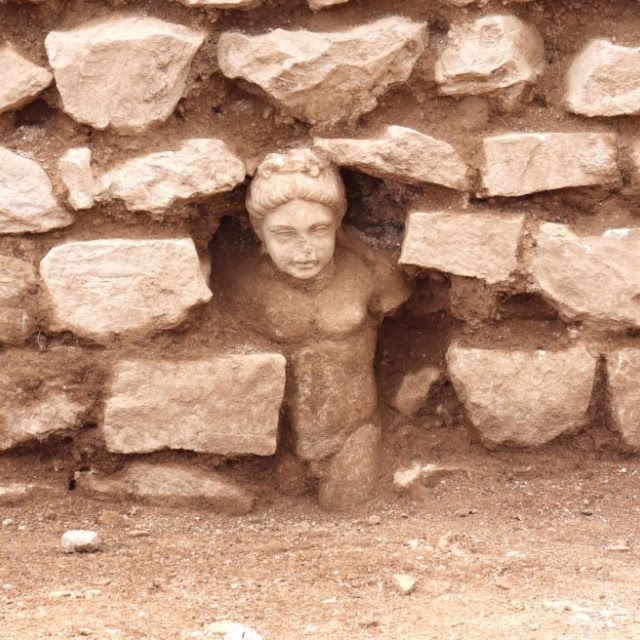Recent archaeological excavations in Philippi have unveiled impressive findings, shedding light on the hidden “secrets” of the ancient city.
Among the discoveries are a large public building, public baths, workshops, and residences. These findings align with previous archaeological studies, affirming the city’s historical significance since its founding in 356 BC by King Philip of Macedonia.

The fire safety project, part of ongoing works at the archaeological site, played a crucial role in these discoveries. Conducted to install a fire safety network, the project inadvertently revealed details about the city’s development and its inhabitants’ daily life. The findings highlight Philippi’s continued importance even after the 6th century AD, challenging the belief that the city was abandoned during that period. Structures dating from the 9th to 11th centuries AD indicate ongoing habitation.
The project also confirmed results from a prior geophysical survey led by Professor Gr. Tsokas of Aristotle University of Thessaloniki. This survey used advanced methods to identify buried walls, aiding in the careful routing of fire safety pipelines to avoid damaging archaeological sites.
According to Stavroula Dadaki, director of the Ephorate of Antiquities of Kavala-Thassos, the discovery of a youthful male statue embedded in a large public building is particularly noteworthy. The project’s careful routing ensured that only a few partially deteriorated walls were affected in the pipeline’s construction.
Spanning 60 acres, the archaeological site of Philippi includes landmarks such as the ancient theater, Basilica B, and the agora. The Ministry of Culture prioritized the installation of the fire safety system, a project with a budget exceeding 2.5 million euros and expected to be completed by fall 2025. The project emphasizes modern technologies to enhance fire safety while respecting the site’s archaeological value.
Since being listed as a UNESCO World Heritage Site in 2016, Philippi has experienced a significant surge in visitor numbers, with 100,000 visitors in 2024—a notable increase from pre-COVID figures ranging around 40,000 annually. Dadaki attributes this rise to extensive site unification works initiated in 2019.
Future excavations are anticipated, focusing on newly highlighted areas, such as a large structure near the ancient theater, which could have served a public function, possibly related to the theater, or as a water reservoir, grain storage, or public baths.
These recent finds promise to provide further insights into the city’s historical landscape and urban planning, enhancing our understanding of Philippi’s enduring legacy.
Source: Athens-Macedonian News Agency






